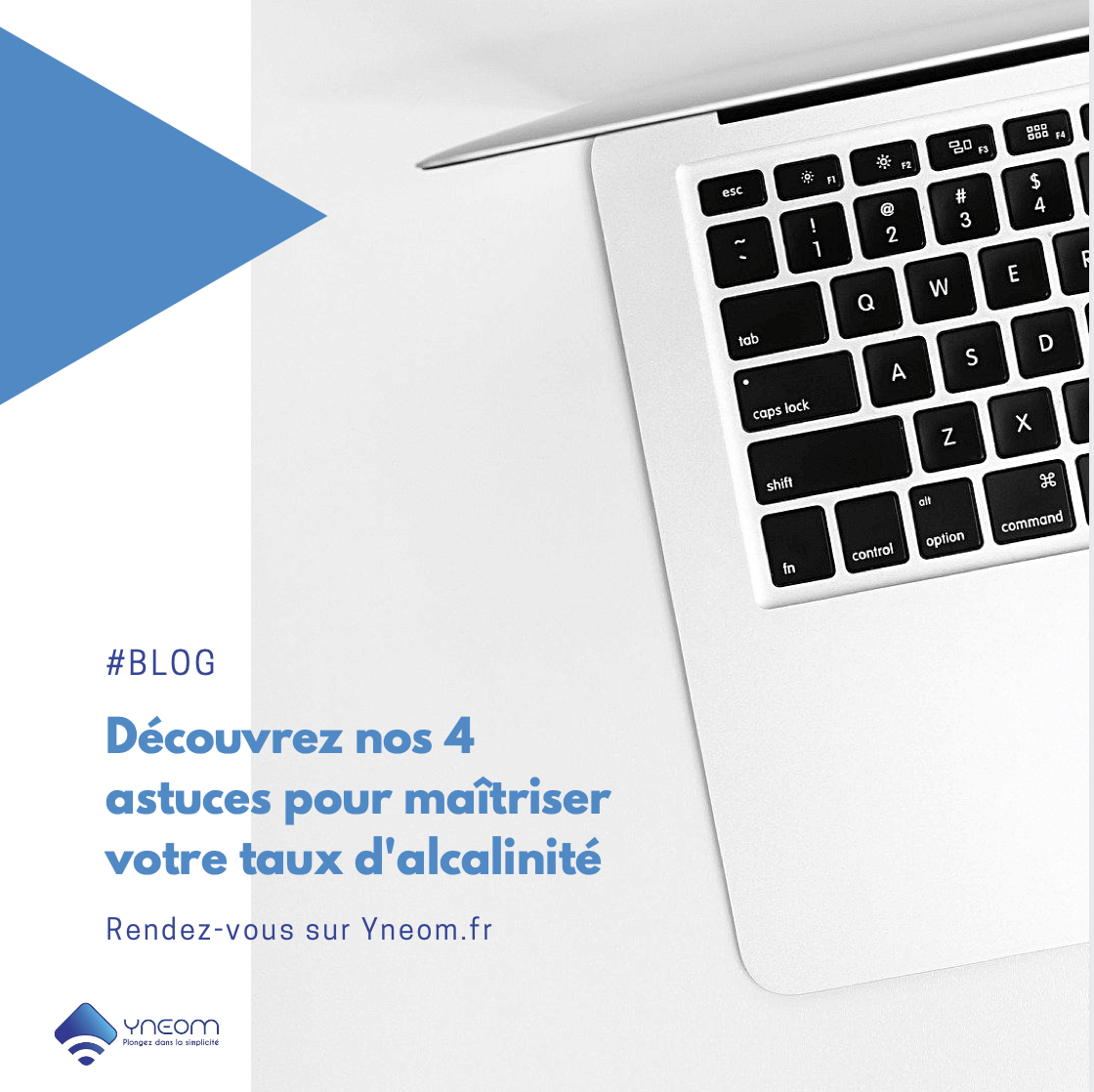In the swimming pool sector, you often hear about alkalinity, or Total Alkalinity . The thing is, you don’t always know what it is and how important it is. When we talk about water that is too alkaline or not alkaline enough, this means that the alkalinity of the water in your swimming pool is out of balance. This factor, in turn, leads to imbalances to the pH level of your water. To avoid this, we will give you our tips on how to manage the alkalinity level of your pool.
1 - Regularly measure the water in your pool
To maintain your pool on a daily basis and achieve a perfect balanced pH for you water, you will need to:
- Measure your pH level regularly
- Manage your calcium levels
- Check your alkalinity level.
You should regularly measure these 3 indicators and correct them if necessary.
Why do I need to check the alkalinity level of my pool?
The Total Alkalinity is a measurement which indicates the quantity of mineral salts in the water of your swimming pool. In other words, its concentration of carbonate and bicarbonate. We then speak of the buffering capacity of water, in other words, its ability to resist pH variations. If acid or alkaline particles appear in your swimming pool, a balanced Total Alkalinity will dissolve them. This ensures that the products you use to clean your pool will be effective.
Total Alkalinity is a key parameter, just like the pH or water hardness. It ensures that your friends and family will be able to enjoy their swim in conditions of optimal comfort. By regularly checking this indicator, you will therefore be able to decrease or increase your alkalinity level. By controlling your alkalinity level, you can ensure that the water quality always remains high for users and prevent your water becoming destabilised.
How do I measure the Total Alkalinity for my swimming pool?
It’s very simple to measure the Total Alkalinity for your swimming pool. As with pH, simply use the coloured test strips available from any swimming pool specialist or on the internet. They will indicate the water's Total Alkalinity and its ability to buffer changes in pH.
Worth knowing: To obtain the correct Total Alkalinity, remember to take a sample about 30 cm below the water surface.
2 - Correcting the alkalinity of your water
How can I correct the alkalinity of my swimming pool water?
The Total Alkalinity for swimming pool water is generally between 80 and 120 mg/l. After noting the test results, you will then know if you need to:
- Decrease the alkalinity level of your pool
- Increase the Total Alkalinity of your water
Total Alkalinity too high? How to decrease the alkalinity of a pool
If your results show that the total alkalinity of the water in your swimming pool is high: there is no specific product to decrease it. You can easily use a pH corrector or an anti-calcium product to reduce the alkalinity of the water.
To decrease the alkaline level of your swimming pool, you can also choose to churn up the water. This is the most natural method for decreasing the TA, which releases carbon dioxide. So, be more active in your swimming pool: get more people swimming, create more eddies, etc.
Total Alkalinity too low: how can I increase the alkaline level of my water?
If your results show that the water of your swimming pool has a low Total Alkalinity: use a sodium-bicarbonate based product. This increases the Total Alkalinity.
What are the risks of not managing the alkalinity level correctly?
If your alkalinity is too low, the water in your swimming pool will become unstable. As we have explained, water with balanced alkalinity is water with a stable pH. On the other hand, if your alkalinity is not corrected properly, you will have large deviations in your pH. Your pH can be destabilised by having a lot of people in the pool, topping the pool up with water or a rain shower, and this critical for your water. The water may become cloudy, with calcium, limescale deposits and even algae in your beautiful pool.
If the Total Alkalinity is too high, it will also make it difficult to change the pH level. This encourages algae to grow or the water to turn a whitish colour.
3 – Follow the instructions if you want to control the alkalinity level
Add the correct amount of product
Make sure you read the instructions for each of the products carefully, and only add the stated amount. Be careful! Adding any product to your pool water should be done step by step. Add it gradually to avoid creating excessive changes which may provoke other imbalances.
Follow the instructions
In addition, even if many alkalinity correctors should be poured directly into the water for them to work, others need to be diluted with water first. If you fail to use the product correctly, you water imbalance could get worse.
Pay attention to the indicators
Total Alkalinity is sometimes expressed in ppm, it can also be in mg/l. That’s not all: you might also find it in French degrees (°f) Here’s an easy rule to help you understand:
1°f = 10 ppm = 10 mg/l!
Useful Tip: Alkalinity has a direct effect on the pH of the water. If you need to correct the pH of your pool, you will first have to adjust the Total Alkalinity.
4 - Choose the freedom of a smart system to manage your Total Alkalinity
Maintaining a swimming pool day-in, day-out is already very demanding. It takes time, especially during the summer season. Yet, as we have seen, it is very important to know how to manage the alkalinity level. Make sure you regularly measure and adjust the water in your swimming pool to avoid any problem with your water.
Ynéom has come up with the perfect solution to give you peace of mind: a controller for automated management. Save time and money with to our #Ynblue device, and let it take care of everything! You will be alerted on your smartphone whenever there is an imbalance. Your device will add the products whenever it becomes necessary. This controller is easy to use, and promises to make managing your swimming pool child’s play. No more mistakes in managing your pool, the water quality will always be perfect for you, your family and your friends.
For any further information, please feel free to contact us.

